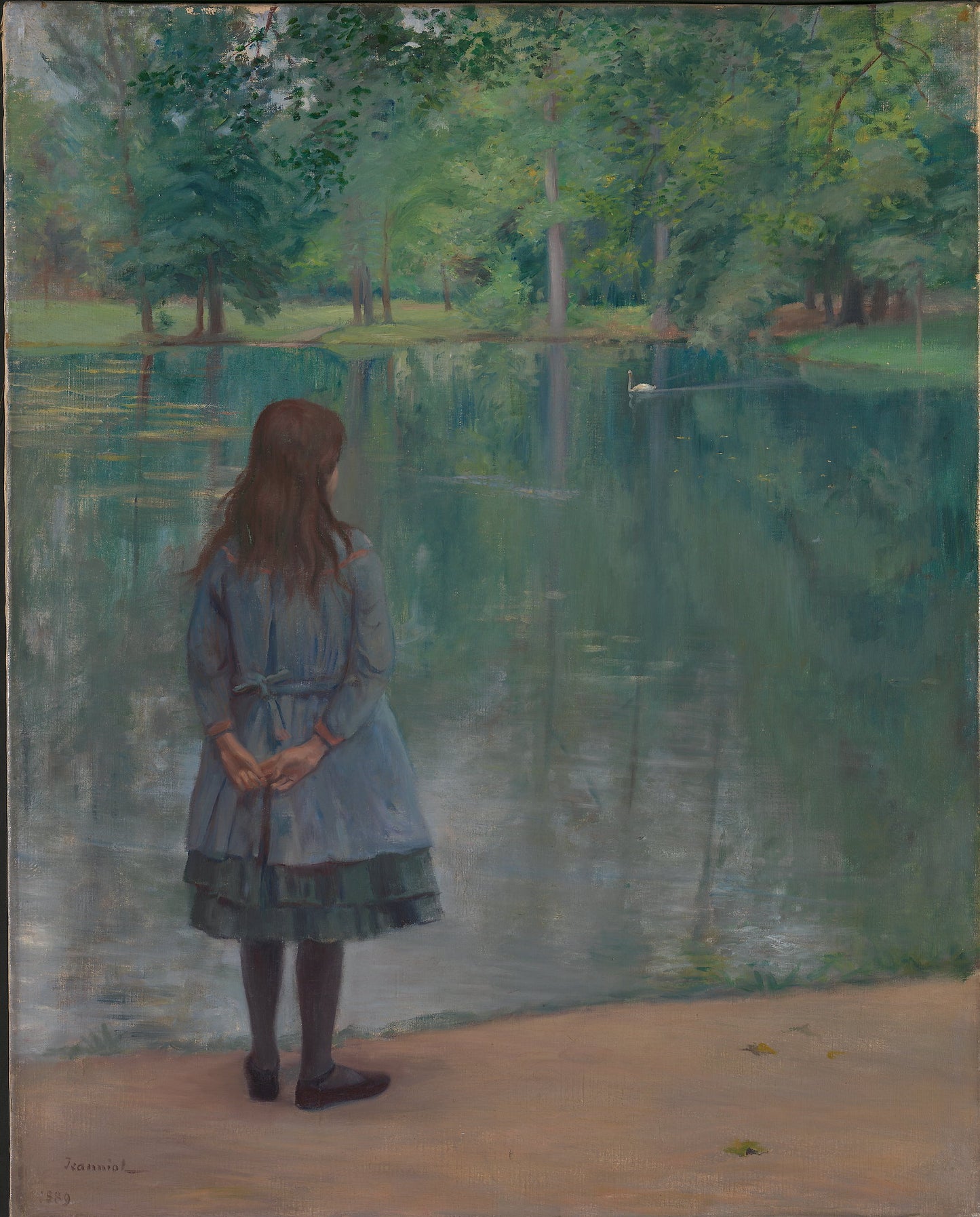Pierre Georges Jeanniot
French park landscape
French park landscape
Couldn't load pickup availability
About the original:
Date: 1889
Designation: Painting
Material and technique: Oil on canvas
Technique: Oil
Material: Canvas
Dimensions: 92.5 x 73 cm
Subject: Visual arts
Classification: 532 - Visual arts
Type of motif: Landscape
Acquisition: Purchased 1891
Inventory no.: NG.M.00393
Registration level: Single object
Owner and collection: The National Museum of Art, Architecture and Design, Visual Art Collections
Photo: Hansteen, A. [miss.]

See all works
-
French park landscape
Vendor:Pierre Georges JeanniotRegular price From 150,00 NOKRegular priceUnit price per

Pierre Georges Jeanniot
Pierre Georges Jeanniot was taught by his father Pierre-Alexandre Jeanniot, who for a long time was the director of the art school in Dijon. He embarked on a military career, but exhibited watercolors as early as 1872 at the Paris Salon.
In 1873 he exhibited his first oil painting there, Le Vernan at Nass-sous-Ste-Anne, and continued to show work there regularly. In 1881, after reaching the rank of captain, he left the army to work full-time as an artist. He settled in Paris, where he won an honorable mention at the Salon in 1882, a third-class medal in 1884, and a silver in 1889 and 1900. He was of a confident and independent mind, and so he joined the Société Nationale des Beaux- Arts as soon as it was set up in 1890. He was made a Chevalier of the Légion d'Honneur. The earliest works he submitted consisted mainly of scenes from military life.
Later he became best known for his scenes of fashionable women in Paris at the time of the Belle Époque and on the beaches of the then brand new seaside resorts, and for his views on racial encounters, all of which provide valuable sociological evidence. He also illustrated many literary works, among them Maupassant's Contes choisis (1886), Germinie Lacerteux (1886), Goncourt's La fille Élisa (1895), and Daudet's Tartarin de Tarascon (1887). He collaborated on the illustration of Victor Hugo's Les Misérables in 1887 and also illustrated Zola's La Débâcle and The Rat-Race (La Curée) from 1893-1894, Octave Mirbeau's Calvary (Le Calvaire) from 1901, Molière's Le Misanthrope, in Balza 1907. Peasants (Les Paysans) in 1911, Les Liaisons dangereuses by Laclos in 1917, as well as Voltaire's Candide and the Voyage à St-Cloud and other works. He was one of those who launched Modern Life (La Vie Moderne), and later he directed the Journal amusant. His drawing is lively and expressive, and his great strength lies in his brilliant depictions of contemporary comedies.


